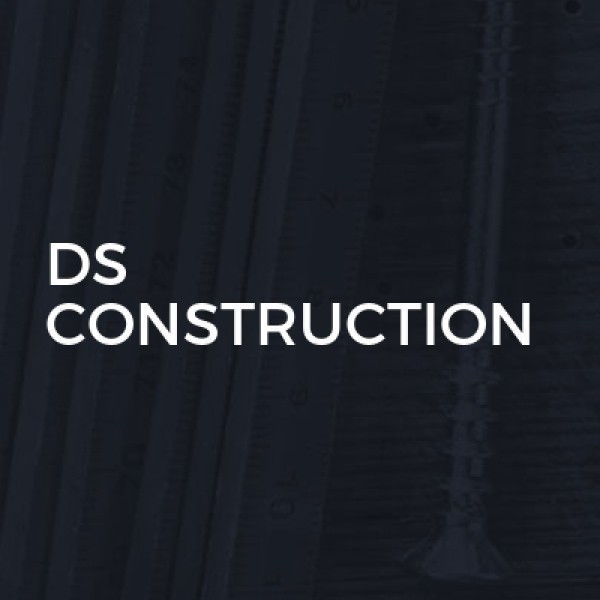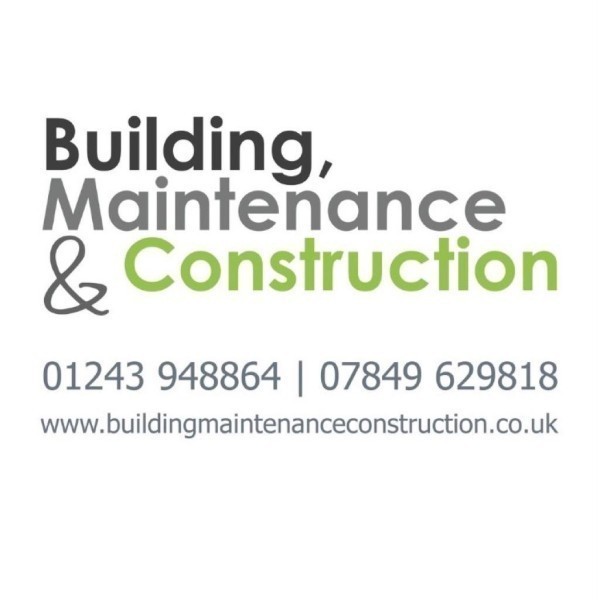Loft Conversions in Arundel
Welcome to JS Building, your premier choice for expert tradespeople services in Sompting and throughout West Sussex. As a distinguished c... read more »
DS Construction is a reputable building firm located in the heart of North Bersted, proudly serving the... read more »
Welcome to Goodwood Stoves Ltd, your premier choice for all building and renovation services in Mid Lavant and throughout West Sussex. Ou... read more »
Welcome to NUTBOURNE Construction Ltd, your trusted partner for exceptional building services in Nutbourne and across West Sussex. As a p... read more »
LTM Building, Maintenance & Construction is a premier business based in the charming locale of Aldingbourne, offering a... read more »
LJR Building Services is a premier choice for all your construction and renovation needs in Fishersgate... read more »
Welcome to RTC Building and Renovations Limited, your... read more »
Welcome to RJG Construction, your trusted partner for... read more »
Welcome to Graingers Home Improvements LTD, your trus... read more »
Welcome to Hope Restorations, your trusted partner fo... read more »
Welcome to MRK Construction Group Ltd, your trusted p... read more »
Welcome to NP Builders, your go-to experts for all bu... read more »
Welcome to Pro Loft, your premier choice for loft con... read more »
Sussex Elite Carpentry Ltd. is a pre... read more »
Welcome to South Downs Carpentry & Building, your pre... read more »
Welcome to Proline Developments Ltd, your premier cho... read more »
Welcome to Accurate Building Solutions Ltd, your go-t... read more »
Welcome to Bricks, Wood & Plaster, your trusted build... read more »
Welcome to JBF Building Contractors Ltd, your go-to e... read more »
Welcome to FDL, your premier choice for property main... read more »
Search Loft Conversions in places nearby
Understanding Loft Conversions in Arundel
Loft conversions in Arundel have become a popular choice for homeowners looking to maximise their living space without the hassle of moving. This charming town, nestled in the heart of West Sussex, offers a unique blend of historical architecture and modern living. By converting your loft, you can add value to your home while enjoying the picturesque surroundings of Arundel. Let's delve into the various aspects of loft conversions, ensuring you have all the information needed to make an informed decision.
The Benefits of Loft Conversions
Loft conversions offer a plethora of benefits, making them an attractive option for homeowners. Firstly, they provide additional living space, which can be used for a variety of purposes such as a bedroom, office, or playroom. This is particularly beneficial for growing families or those who work from home. Moreover, a well-executed loft conversion can significantly increase the value of your property, making it a wise investment.
Another advantage is the ability to customise the space to suit your needs. Whether you desire a tranquil retreat or a vibrant workspace, a loft conversion allows you to create a personalised environment. Additionally, loft conversions are often more cost-effective than building extensions, as they utilise existing space within the home.
Environmental Considerations
In today's world, sustainability is a key concern for many homeowners. Loft conversions can be an eco-friendly option, as they often require fewer materials than traditional extensions. By incorporating energy-efficient windows and insulation, you can reduce your carbon footprint and lower energy bills. Furthermore, using sustainable materials and practices during the conversion process can contribute to a greener home.
Types of Loft Conversions
There are several types of loft conversions to consider, each with its own set of advantages and considerations. The most common types include dormer, hip-to-gable, and mansard conversions. Understanding the differences between these options will help you choose the best fit for your home.
Dormer Loft Conversions
Dormer loft conversions are one of the most popular choices due to their versatility and cost-effectiveness. A dormer is an extension that projects vertically from the existing roof, creating additional headroom and floor space. This type of conversion is suitable for most property types and can be designed to blend seamlessly with the existing architecture.
Hip-to-Gable Loft Conversions
Hip-to-gable conversions are ideal for homes with a hipped roof, which slopes on all sides. This conversion involves extending the sloping side of the roof to create a vertical gable wall, resulting in more usable space. Hip-to-gable conversions are particularly popular in semi-detached and detached properties.
Mansard Loft Conversions
Mansard conversions are typically more complex and involve altering the entire roof structure. This type of conversion creates a flat roof with steeply sloping sides, maximising the available space. Mansard conversions are often used in urban areas where space is at a premium and are suitable for most property types.
Planning Permission and Building Regulations
Before embarking on a loft conversion in Arundel, it's essential to understand the planning permission and building regulations involved. In many cases, loft conversions fall under permitted development rights, meaning you won't need planning permission. However, there are exceptions, particularly for listed buildings or properties in conservation areas.
Permitted Development Rights
Permitted development rights allow homeowners to make certain changes to their property without obtaining planning permission. For loft conversions, these rights typically apply if the conversion does not exceed a specific volume and does not alter the roof's height. It's crucial to check with the local planning authority to ensure your project complies with these regulations.
Building Regulations
Regardless of whether planning permission is required, all loft conversions must adhere to building regulations. These regulations ensure the safety and structural integrity of the conversion, covering aspects such as fire safety, insulation, and access. Hiring a qualified architect or builder can help ensure your project meets these requirements.
Choosing the Right Professionals
Selecting the right professionals for your loft conversion is crucial to the success of the project. From architects to builders, each plays a vital role in bringing your vision to life. It's essential to research and choose experienced professionals with a proven track record in loft conversions.
Architects
An architect can help design a loft conversion that maximises space and complements your home's existing architecture. They can also assist with obtaining planning permission and ensuring compliance with building regulations. When choosing an architect, look for someone with experience in loft conversions and a portfolio of successful projects.
Builders
A skilled builder is essential for executing the conversion to a high standard. Look for builders with experience in loft conversions and positive reviews from previous clients. It's also advisable to obtain multiple quotes to ensure you're getting a fair price for the work.
Cost Considerations
The cost of a loft conversion can vary significantly depending on factors such as the type of conversion, the size of the space, and the materials used. On average, a loft conversion in Arundel can range from £20,000 to £50,000. It's important to set a realistic budget and factor in potential additional costs such as planning permission fees and interior furnishings.
Financing Your Loft Conversion
There are several options for financing a loft conversion, including savings, home improvement loans, and remortgaging. It's essential to explore these options and choose the one that best suits your financial situation. Consulting with a financial advisor can provide valuable insights and help you make an informed decision.
Designing Your Loft Space
Designing your loft space is an exciting part of the conversion process. Whether you're creating a cosy bedroom or a functional office, there are several design elements to consider. From lighting to storage solutions, each aspect plays a role in creating a comfortable and practical space.
Lighting
Lighting is a crucial element in any loft conversion, as it can significantly impact the atmosphere and functionality of the space. Consider incorporating a mix of natural and artificial lighting to create a bright and inviting environment. Skylights and dormer windows are excellent options for maximising natural light.
Storage Solutions
Effective storage solutions are essential in a loft conversion, particularly if the space is being used as a bedroom or office. Built-in wardrobes, shelving, and under-eaves storage can help maximise space and keep the area organised. Custom storage solutions can also be designed to fit the unique dimensions of your loft.
FAQs About Loft Conversions in Arundel
1. How long does a loft conversion take?
The duration of a loft conversion can vary depending on the complexity of the project. On average, a loft conversion can take between 6 to 12 weeks to complete.
2. Do I need planning permission for a loft conversion in Arundel?
In many cases, loft conversions fall under permitted development rights, meaning planning permission is not required. However, it's essential to check with the local planning authority to ensure compliance.
3. How much does a loft conversion cost in Arundel?
The cost of a loft conversion can range from £20,000 to £50,000, depending on factors such as the type of conversion and the size of the space.
4. Can I convert my loft if I live in a listed building?
Converting a loft in a listed building may require planning permission and adherence to specific regulations. It's advisable to consult with the local planning authority for guidance.
5. What is the best type of loft conversion for my home?
The best type of loft conversion depends on your home's architecture and your specific needs. Consulting with an architect can help determine the most suitable option.
6. How can I ensure my loft conversion is energy-efficient?
Incorporating energy-efficient windows, insulation, and sustainable materials can help create an eco-friendly loft conversion. Consulting with professionals can provide additional insights and recommendations.
Loft conversions in Arundel offer a fantastic opportunity to enhance your living space and add value to your home. By understanding the various aspects of loft conversions, from planning and design to execution and cost, you can embark on this exciting journey with confidence. With the right professionals and careful planning, your loft conversion can become a cherished part of your home, providing comfort and functionality for years to come.










